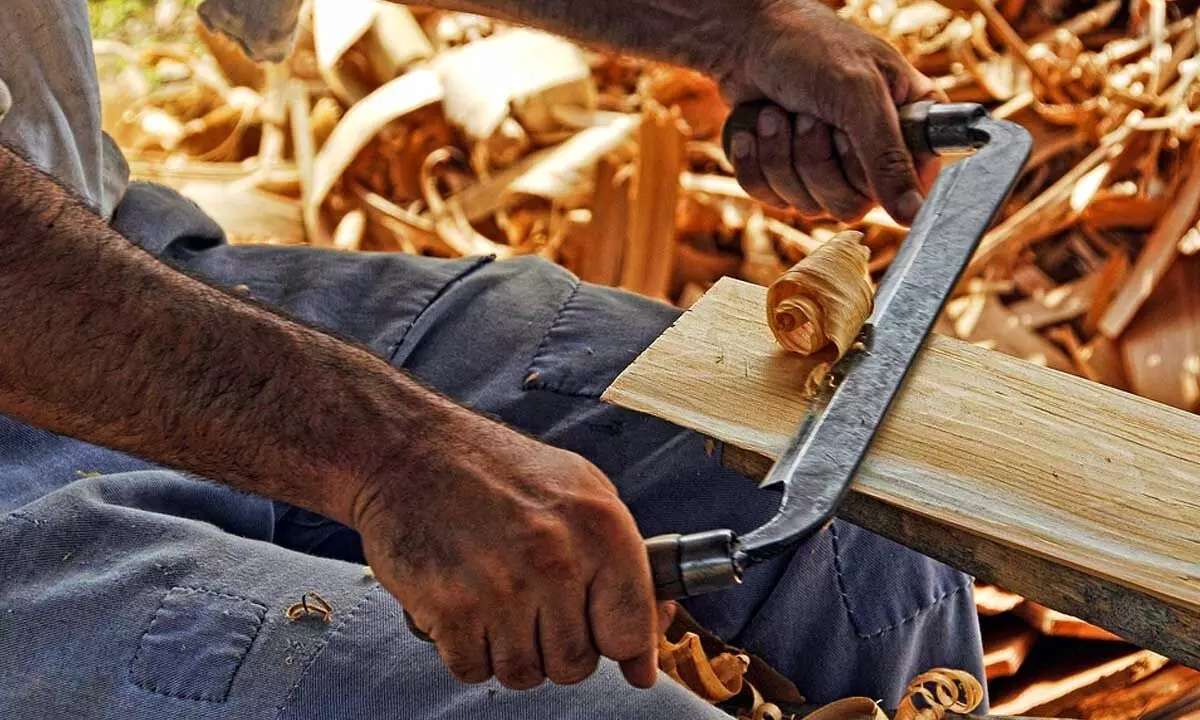5 Woodworking Tips for Beginners

5 Woodworking Tips for Beginners
While mastering woodworking art isn't easy, it's not a mystery. It allows you to express your emotions and creativity.
While mastering woodworking art isn't easy, it's not a mystery. It allows you to express your emotions and creativity. As a woodworker beginner, you must learn basic skills, including drilling materials, cutting materials, understanding wood, selecting screws, sharpening your tools, sanding, cutting Tenon and mortise joints, cutting dovetail joints, and painting and finishing to increase your confidence.
You should also familiarize yourself with common woodworking terminologies like jointing, planning, routing, sawing, drilling, sanding, gluing, and finishing. This article outlines five woodworking tips for beginners.
1. Familiarize yourself with beginner-friendly wood types
While you might think that all wood is the same, that isn't the case. Specific woods are easier to work with, which comes in handy, especially when you're learning your way around power tools and woodwork. Barry Gray recommends pine fir, soft maple, spruce, white oak, Beachwood, poplar, and cherry as the best wood for beginner woodworking.
These woods can be hardwoods or softwoods. As a woodwork beginner, you might make many mistakes as you learn, so opt for affordable wood to avoid high costs when practicing various techniques and tools. Always pick suitable material for your project to ensure it runs seamlessly.
2. Start small
As a woodworking beginner, you may be tempted to start with a huge project you saw online. However, such projects are usually done by experienced woodworkers. Consider starting small as you learn your way with tools and basic techniques. You can begin with outdoor items such as a dog house to hone your woodworking skills. The project you pick should be something you're interested in. This helps ensure that mistakes won't cost you much, avoiding unnecessary losses and disappointments.
3. Learn the different types of woodworking
Woodwork involves various activities and skills, including some that are purely artistic and others that are construction-related. They are:
- Woodcarving
Woodcarving, mainly an artistic activity, is a low-tech woodworking type that employs mallets, chisels, and sometimes power tools. You can make figurines, statues, decorative molding, and more as a woodcarver.
- Cabinet-making
As a cabinet maker, you create interior finishes such as tables and boxes using exotic hardwoods and complex joinery.
- Woodturning
Wood turners make vases, cups, bowls, chair and table-shaped legs, baseball bats, and decorative balusters.
- Wood burning
Wood burning, also called pyrography, is an art that uses heated objects like soldering irons or torches to burn a design into wood.
- Marquetry
Marquetry involves creating complex designs from thin wood pieces and installing them on different surfaces. As a marquetry artist, you'll utilize a scroll saw to shape floral and geometric inlay patterns.
4. Know the must-have woodworking tools
To succeed in woodwork, you must have various tools that are meant explicitly for woodworking. They include hand and power saws, sanders, files, planes, hammers, drills, mallets, screw guns, squares, tape measure, workbench, and sawhorses.
5. Find a mentor
Learning woodwork can be challenging. However, finding a mentor can help ease the process. While there are various websites and forums where you can learn this craft, it doesn't compare to going to someone's shop. You can go to experienced local guilds or furniture makers to learn skills and information that can help you get started with woodworking. You can also join a woodworking community.
- Endnote
Woodworking is an excellent hobby for releasing stress and exploring your creativity. Consider using these beginner woodworking tips to kickstart your craft.














